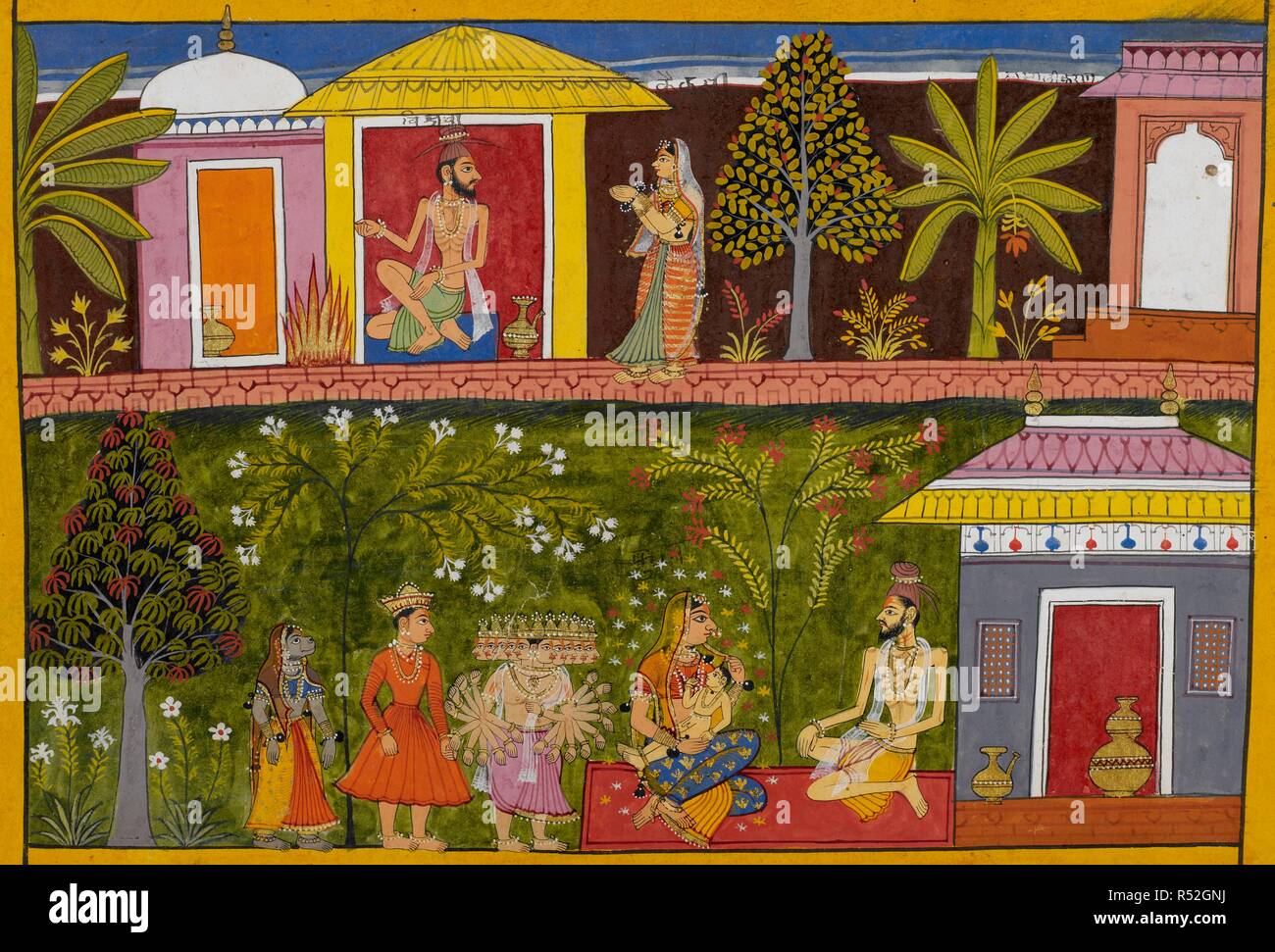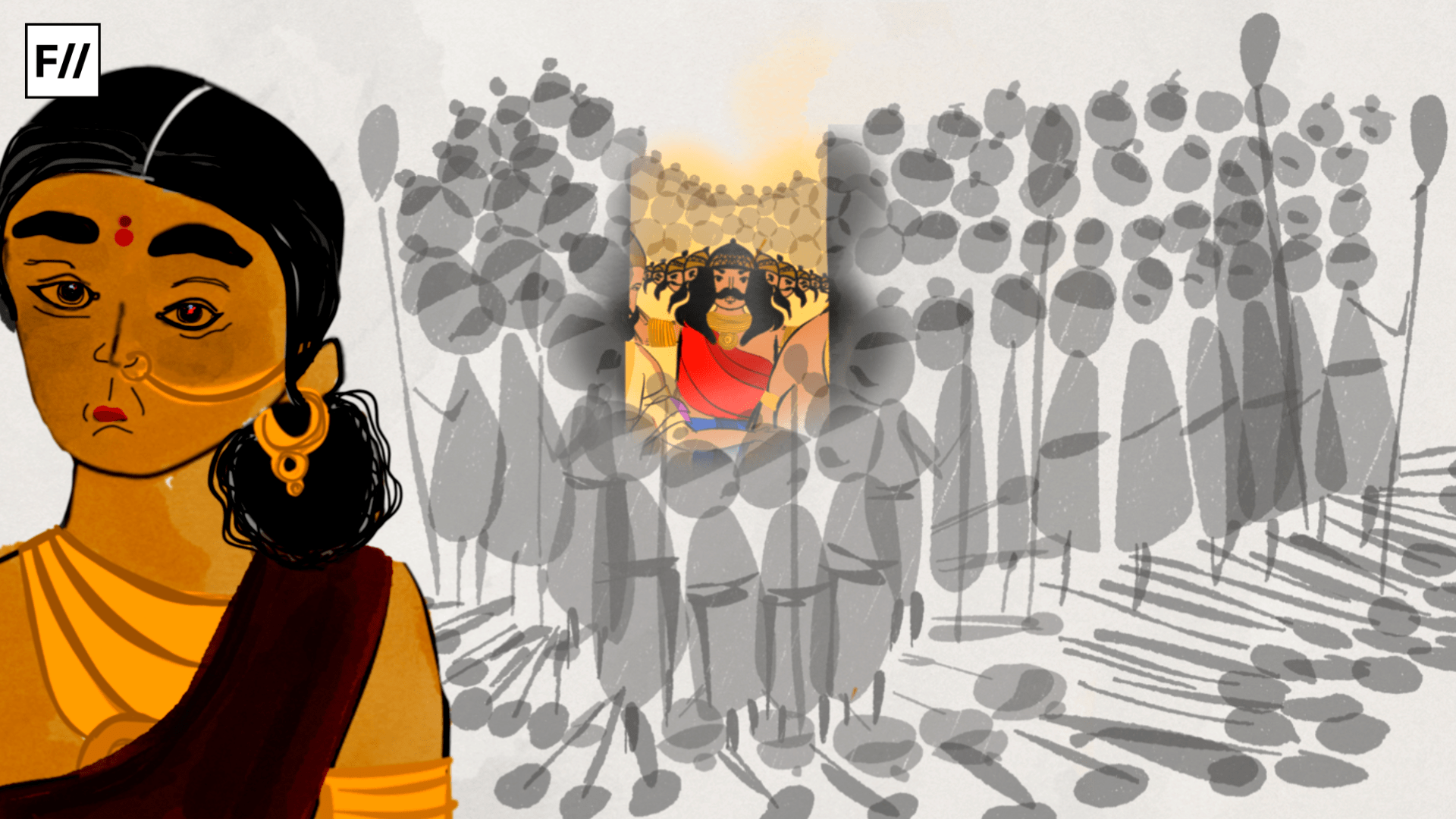The Sanskrit epic Ramayana of Valmiki embodies the story of Rama, the prince of Ayodhya and his tryst with Ravana, the kind of Lanka, who abducted his wife Sita while they were exiled in the forest. Though it is an epic poem and a literary text, to the majority of Hindus, the Ramayana is a religious text and its influence within the subcontinent cannot be undermined.
Originally written by Valmiki, there are different versions of the epic across cultures, languages and traditions embodying the shifting perspectives of religion, region, caste and gender.
Also, in recent times, there has been a spate of retellings of the epic from the point of view of the sidelined characters including Surpanakha, Urmila, Shanta, Sulochana and Mandodari. One character who however remains largely ignored in these retellings is Kaikasi – the mother of Ravana, also known as Nikasha.

The Uttara Kanda of the Ramayana narrates the backstory of Ravana including the origin of the Rakshasas and the history of Lanka. From the Uttara Kanda we know that long before the birth of Ravana, the rakshasas defeated by Lord Vishnu, fled the city of Lanka to take refuge in the underworld. Lanka then came under the rule of Kubera- the god of wealth, the son of Sage Vishrava and Devavarini, daughter of Sage Bhardhvaja.
The Uttara Kanda mentions very little about Kaikasi, his mother or Mandodari, his partner. It is about the masculine feats of Ravana where battles are mentioned with details of all the weapons used, a world where women rarely remain without serving the cause of men. In fact, the inferior position of daughters in the familyis evident as both Sumali the father of Kaikasi and Maya the father of Mandodari reiterate in the Uttara Kanda that unmarried daughters cause undue worry in both their father’s and mother’s families
Kaikasi, the mother of Ravana, was the daughter of the powerful rakshasa Sumali and his wife Ketumati who had taken refuge in the underworld. Incidentally, when Sumali witnessed Kubera on his Pushpaka Vimana in all his glory, he immediately communicated to his beautiful daughter Kaikasi to approach Vishrava, and enter into marriage with him, so that the children who would be born of such a union would be as powerful as him also considering his ancestry from the Brahma, and in that case, there would be an equal chance for the rakshasas to win back Lanka. Kaikasi obeys her father; she subsequently charms Vishrava and through him conceives Ravana, Kumbhakarna, Surpanakha and Vibhishana.

The Ramayana may be the journey of Rama but the Uttara Kanda gives details of the life of Ravana. However, this backstory is detailed only with aspects of the conquests of Ravana over Kubera, Indra, Yama, his battles with Vali etc. and most of all the curses afflicted on him because of his violation of women like Vedavati and Rambha.
The Uttara Kanda mentions very little about Kaikasi, his mother or Mandodari, his partner. It is about the masculine feats of Ravana where battles are mentioned with details of all the weapons used, a world where women rarely remain without serving the cause of men. In fact, the inferior position of daughters in the family is evident as both Sumali the father of Kaikasi and Maya the father of Mandodari reiterate in the Uttara Kanda that unmarried daughters cause undue worry in both their father’s and mother’s families .

Speaking of motherhood, in the context of the Ramayana, all the mothers in the epic accept struggles which extend to the political realm to ensure the claim of their sons to the throne. Kaikeyi, the third wife of King Dasharatha of Ayodhya, is guided by ambition to overstep and divert the dynastic line to her son Bharata.
Even King Vali’s wife Tara’s primary interest is the restoration of the throne to her son Angad. Similarly, in one instance we find Kaikasi instigating jealousy in Ravana towards Kubera by comparing him to his half- brother and Ravana, filled with emotional pain pledging to be Kubera’s equal or superior so that he can win back the city of Lanka.
Also read: The Nameless Curious Queen Of Ramayana
Therefore, from this limited presence of Kaikasi in the epic can she be called an independent character or is she there primarily to support the patriarchal design?

Image: Deccan Chronicle
Unlike Surpanakha who goes to Rama out of her own desire, Kaikesi goes to Vishrava to ensure the birth of a powerful son to restore Lanka to the rakshasas. Her active role only comes forth when like Mandodari, she also shows insight and shrewdness in foreseeing the destruction of Lanka which will result if Sita is not set free.
Studying ancient texts through the lens of feminism helps us interrogate the silences of women and to understand whether the characters are merely subservient to patriarchy or possess the agency to subvert and resist the same. Feminist retellings are therefore important to give voice to these silences
The Sundara Kanda of the Krittibasi Ramayana, a Bengali version Ramayana narrates that, witnessing the destruction of Lanka by Hanuman, Ravana’s mother Kaikasi (here known as Nikasha) rushes to Vibhishana, literally goading him to make Ravana aware that Sita’s forced captivity will destroy and bring doom on the Rakshasas.
In the Valmiki Ramayana, in the Chapter 6(25) of the Yuddha Kanda, Sarama narrates to Sita that Kaikasi, the mother of Ravana, as well as Aviddha the aged minister, pleaded with Ravana for the immediate release of Sita to prevent Lanka from destruction but Ravana refused to pay any heed to them. Kaikasi, we find, rejects the need for revenge through violence and ascribes to a different code rather than that which gives importance to mindless male heroism.
In view of the above, the popular perception that Ravana, Kumbhakarna and Surpanakha with their villainous undertones took after their demon mother while Vibhishana embodied the saintly qualities of their father does not fully hold to be true. Considering Kaikasi’s advice to set Sita free, the Ramayana does not fully ascribe to this populist notion of Kaikasi being malicious.

However, even though she is the mother of the main antagonist of the epic, very little voice is given to her character. This may be because she belonged to the side of the vanquished and also because she was a woman who had little say or control in the lives of her sons.
Women, as Chitra Banerjee Divakaruni has said in her introduction to The Palace of Illusions remain secondary to the male characters and make their appearance to support the epic world of masculine heroism.
Studying ancient texts through the lens of feminism helps us interrogate the silences of women and to understand whether the characters are merely subservient to patriarchy or possess the agency to subvert and resist the same. Feminist retellings are therefore important to give voice to these silences.
Also read: Revisiting Ramayana And Its Relevance Through A Feminist Lens
Together, they foster an important source of our understanding of gender and marginalisation in the real world with contrast to the ancient times, which leads to reassessment of the position of women in the modern scenario. We need many more retellings on Kaikasi like those on Surpanakha and Mandodari.
References:
- Mukhopadhay Harekrisha and Dr. Chattopadhay Sunitikumar eds. Ramayan Krittibas Birochito. Sahitya Sansad, 1957.Print
- Rich, Adrienne. “When We Dead Awaken: Writing as Re-Vision.” National Council of Teachers of English, Vol. 34, No. 1,Oct., 1972, pp.18-30,www.jstor.org/stable/375215
- Kane Kavita. Lanka’s Princess. Rupa Publications. 2016
- Anandani. J. Manini. Queen of Lanka. Penguin Books. 2018
- Divakaruni, Chitra. B. The Palace of Illusions. New York, Doubleday, 2008
Tapti Bose is a lawyer based in Kolkata. Her areas of interest include women’s legal studies and women’s literature. You can find her on Facebook
Featured Image: Ritika Banerjee for Feminism In India




